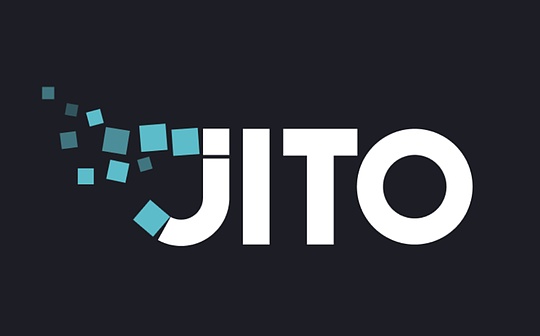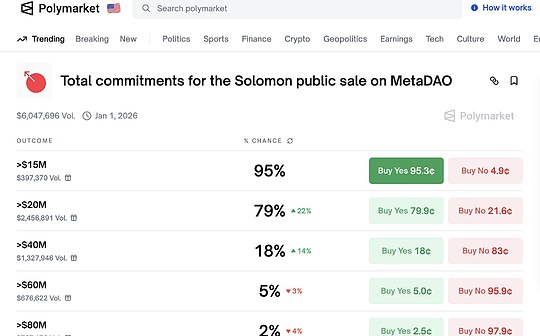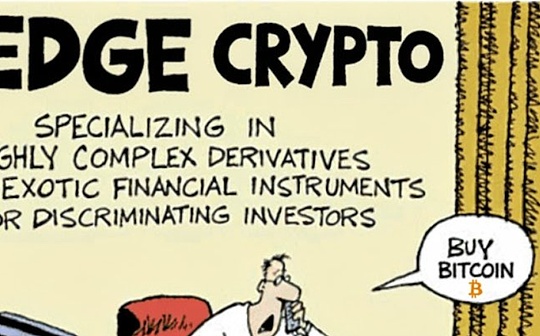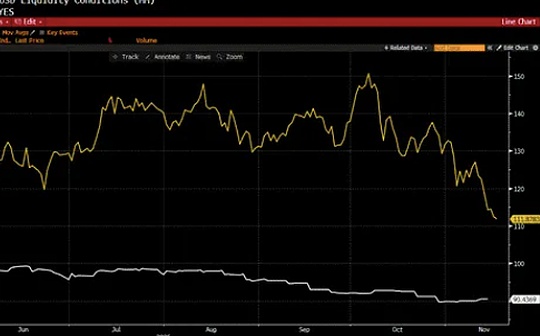
Source: Chain Tea House
Binance Labs announces investment in StakeStone, a full-chain liquidity distribution network.StakeStone uses STONE (interest-generating ETH token) to bring native staking income and liquidity to the Layer2 network. This article attempts to fully understand the fundamentals of the StakeStone project through 12 questions.
1. Which track field does the project belong to? What are the projects similar to it?
The StakeStone project belongs to the Liquid Staking track field, especially in the context of decentralized finance (DeFi) and Ethereum Layer 2 solutions.Projects in this field focus on providing liquid staking services, allowing users to pledge their crypto assets (such as Ethereum) into different protocols to obtain pledge proceeds while maintaining liquidity of assets.Projects similar to StakeStone, including Lido, Rocket Pool, etc., all provide liquid staking services, but each has its own characteristics and mechanisms.StakeStone is unique in its cross-chain liquidity market and OPAP mechanism, which allows it to provide users with a wider range of use cases and earnings opportunities.
2. What problems does the project mainly solve?
The main problem that the StakeStone project solves is how to provide users with optimized liquidity staking income and cross-chain liquidity solutions in a decentralized environment.Specifically, it provides innovative solutions to the following key issues:
-
Balance between liquidity and income: Traditional pledges usually lead to the loss of asset liquidity because the pledged assets are locked and cannot be used elsewhere.StakeStone provides the concept of Yield-bearing ETH, allowing users to retain liquidity of assets while obtaining staking returns.
-
Cross-chain compatibility: With the development of a multi-chain ecosystem, users need to efficiently move and manage assets between different blockchains.StakeStone supports seamless transfer of assets and prices between multiple blockchains by establishing a STONE-based multi-chain liquidity market.
-
Automatic revenue optimization: Users may lack expertise or time to continuously optimize their staking strategies.StakeStone’s OPAP (Optimising Portfolio and Allocation Proposal) mechanism automatically adjusts the underlying asset allocation to ensure that users can obtain the best pledge income.
-
Transparency and security: In the DeFi field, transparency and security of underlying assets are crucial.StakeStone provides complete asset and income transparency through decentralized architecture and non-custodial services, ensuring the security of user funds.
-
Simplified integration and adoption: Integrated liquid staking solutions can bring additional complexity to Layer 2 developers.As a non-rebase OFT (Omnichain Fungible Token) based on LayerZero, STONE can be easily integrated by Layer 2 developers without additional complexity.
3. What are the core functions of the project and its main operating principles?
The core function of the StakeStone project is to provide a cross-chain liquid staking protocol that allows users to participate in staking of Ethereum and other blockchain networks through their native Liquid Staking Token (LST) – STONE, while maintaining assets.liquidity and profitability.Here are the main functions and operating principles of StakeStone:
Core functions:
-
Liquid staking: Users can pledge ETH or other supported assets to StakeStone to obtain pledge income.These assets are converted into Yield-bearing ETH or other forms of LST, and these tokens represent the user’s pledged assets and corresponding rights to earnings.
-
Multi-chain compatibility: STONE is built on LayerZero, which means it can seamlessly transfer between multiple blockchains, providing users with a solution for cross-chain liquidity.
-
Automatic income optimization: Through the OPAP (Optimising Portfolio and Allocation Proposal) mechanism, StakeStone can automatically adjust and optimize the configuration of underlying assets to ensure that users obtain the best pledge income.
-
Non-custodial and Transparency: StakeStone’s architecture is non-custodial, and all transactions and asset status are publicly verifiable, ensuring full control and transparency of their assets.
-
Easy to integrate: For Layer 2 developers, STONE can be easily integrated into their platform without complex setups or additional technical requirements.
How to operate:
-
Staking and Conversion: Users send ETH or other assets to the StakeStone protocol, which are then converted into corresponding LSTs (such as STONE tokens), which can be used in other DeFi platforms or applications, while users receive staking benefits..
-
OPAP mechanism: OPAP is an innovative feature of StakeStone, which allows protocols to automatically adjust their asset allocation based on market conditions and policy performance.This means that STONE holders can automatically obtain the best staking income without manual management.
-
Cross-chain liquidity: STONE, as an OFT based on LayerZero, supports cross-chain liquidity, allowing assets to move freely between different blockchain networks, providing users with a wider market opportunity.
-
Profit distribution: Pledge income (including transaction fees, governance rewards, etc.) is regularly distributed to STONE holders. These benefits can be direct token allocation or reflected in the form of increased STONE value.
Through these functions and principles, StakeStone aims to provide users with an efficient, flexible and profit-maximizing staking platform, while promoting the development of DeFi and cross-chain liquidity.
4. What technological innovations are there in the project?What are the core advantages?
Technological innovation:
-
Optimising Portfolio and Allocation Proposal (OPAP) mechanism: This is an innovative feature of StakeStone, which allows automatic optimization of the configuration of underlying assets to ensure that users can obtain the best staking income.The OPAP mechanism automatically adjusts asset allocation through algorithms and smart contracts to respond to market changes and the performance of different staking pools.
-
Uncustodial and Transparency: StakeStone provides a fully uncustodial service, with all pledged assets and earnings managed by smart contracts, ensuring full transparency of underlying assets and earnings.This design improves security and reduces trust costs.
-
Cross-chain liquidity: LayerZero-based STONE tokens support seamless asset and price transfer across multiple blockchains.This cross-chain compatibility provides developers and users with great flexibility, allowing them to easily move and leverage assets in different blockchain ecosystems.
-
Multi-chain liquidity market: StakeStone has established a multi-chain liquidity market based on STONE, providing users with more use cases and profit opportunities.This includes not only the pledge proceeds, but also the possibility of participating in other DeFi activities.
Core advantages:
-
Maximize returns: Through the OPAP mechanism, StakeStone can ensure that users can obtain maximum staking returns without the need for users to conduct complex asset management themselves.
-
User Experience: StakeStone is designed to focus on user experience, and through simplified operational processes and intuitive interface, it allows even DeFi novices to participate easily.
-
Security and Trust: Due to its unmanaged nature and transparency, users can fully trust the system and can track their assets and earnings in real time.
-
Cross-chain capability: The cross-chain capability of STONE tokens provides users with a wider range of investment opportunities, allowing them to take advantage of the different blockchain networks.
-
Easy to integrate: For Layer 2 developers, STONE’s easy integration reduces the technical barriers, allowing more projects to quickly adopt StakeStone’s liquid staking services.
5. The overall business model, what is the goal of which household serves?
Key components of business model:
-
Liquid staking service: StakeStone allows users to pledge crypto assets (such as ETH) into different blockchain networks while obtaining corresponding liquidity tokens (such as STONE), which can be traded on the market or used for otherDeFi services.
-
Revenue optimization: Through the OPAP mechanism, StakeStone automatically optimizes the user’s pledged asset allocation to achieve maximum returns.Such services may be charged a fee as one of the revenue sources for the project.
-
Cross-chain liquidity: The cross-chain nature of STONE tokens enables StakeStone to provide liquidity services to users in multiple blockchain networks, which may involve cross-chain transaction fees or other related service fees.
-
Ecosystem construction: StakeStone may cooperate with other DeFi projects to jointly build a more prosperous DeFi ecosystem by providing liquidity, pledge services or other financial products.
Target user group:
-
Cryptocurrency Investors: Individual investors seeking passive returns from pledging crypto assets, they may want to simplify the staking process through StakeStone’s automated services.
-
DeFi users: Users interested in decentralized financial products may be looking for other earning opportunities besides traditional lending and liquidity mining.
-
Layer 2 Developers: Developers who need to integrate liquid staking services for their Layer 2 solutions can leverage StakeStone’s ease of integration to attract and retain users.
-
Institutional Investors: Large investment funds or institutions that may be interested in providing liquidity staking services that provide stable and optimize returns.
-
Cross-chain asset users: Users who want to seamlessly transfer assets between different blockchain networks can use STONE’s cross-chain features to achieve this goal.
6. What are the main sources of income for the project?
-
Pledge service fee: As a liquid pledge agreement, StakeStone may charge a certain proportion of service fee for users to pledge their assets.This is a typical source of revenue for DeFi platforms, similar to transaction fees or management fees.
-
Re-staking Income: StakeStone supports re-staking mechanisms, allowing users to re-stake their liquid staking tokens (such as STONE) to obtain additional income.During this process, the project may charge a certain proportion of re-pled service fee.
-
Cross-chain liquidity service fee: Since STONE is based on LayerZero’s OFT and supports cross-chain liquidity, StakeStone may charge fees for services that transfer assets across chains.
-
Partners and Integration Services: StakeStone may work with other DeFi projects or blockchain applications to provide liquidity support or integration services, thereby obtaining cooperation fees or share.
-
Governance and Voting Rights: In the Decentralized Autonomous Organization (DAO) model, StakeStone’s token holders may participate in governance decisions, and projects may receive funding through governance proposals.
-
Token Economic Model: StakeStone’s token economic model may include token issuance, repurchase and destruction mechanisms, and the implementation of these mechanisms may indirectly affect project revenue.
-
Liquidity Mining Rewards: If StakeStone implements a liquidity mining plan, it may receive a portion of transaction fees or other forms of rewards as income from users who provide liquidity.
-
Technical Service Fee: StakeStone may charge a certain technical service fee for APIs, SDKs or other technical solutions provided to other projects or developers.
7. How to use the distribution of project tokens and how to unlock it?
Not yet announced
8.What are the application scenarios of token? Are there pledge and destruction mechanisms?
Not yet announced
9. What are the founding teams of the project and what are their background resumes?
Not yet announced
10. What are the core investment institutions for project valuation financing amount?
Not yet announced
11. Current user volume, transaction volume, revenue, tvl and other data?
tvl hit $1.2 billion
12. What exchanges have the tokens been put on?
Not yet announced








